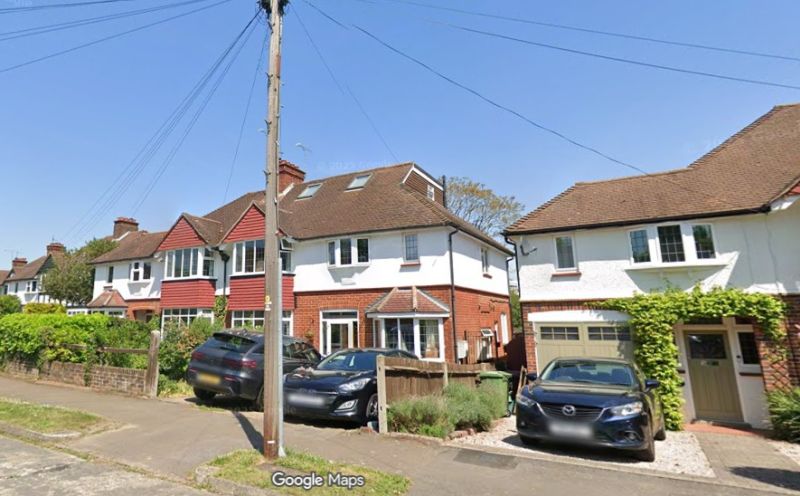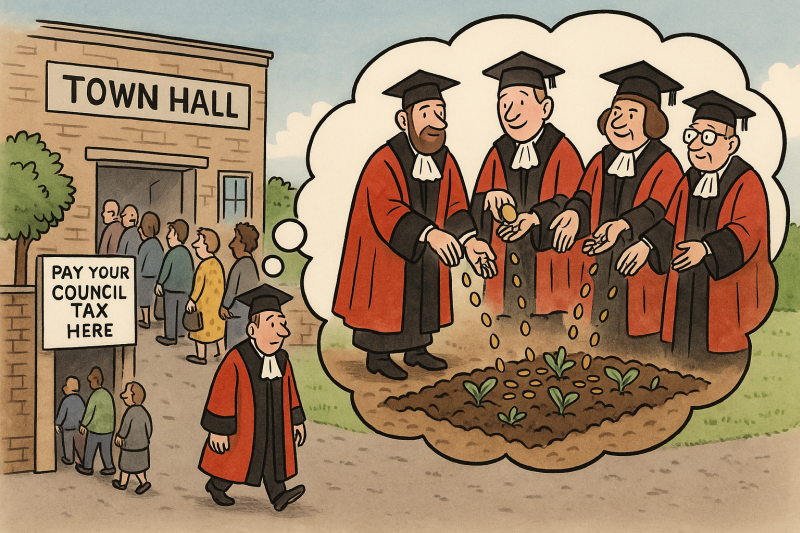Housing Targets Spark Fierce Debate in Epsom and Ewell
New Government proposals for housing targets have prompted a passionate response from local officials, community groups, and residents. The Government’s recent consultation on planning reform suggests a dramatic 41% increase in the number of homes to be built in Epsom and Ewell, a figure that has alarmed many and sparked fears of irreversible damage to the borough’s unique character and environment.
Councillor Neil Dallen MBE (RA Town Ward), Vice Chair of Licensing and Planning Policy, led the charge in voicing opposition to the Government’s proposals in a letter addressed to Angela Rayner MP, the Secretary of State for Housing, Communities and Local Government. Cllr Dallen’s letter paints a dire picture of the potential impact of the housing increase, emphasising that the proposed rise from 576 to 817 homes per year would place immense pressure on the borough’s already-stretched infrastructure and services.
“We are happy to ‘play our part’ and accept that some new housing is needed,” Dallen writes, acknowledging the need for development in line with local plans. However, he warned that the scale of the increase could “destroy our historic district and market town if they come to fruition.” According to Dallen, the increased housing numbers would lead to “endless planning by appeal, change the character of the district, and entirely undermine the plan-led system of Local Plans.”
Dallen also pointed to the significant challenges posed by the geography and heritage of Epsom and Ewell. “With around 50 per cent of the district as Green Belt,” he noted, there is already limited space for development. Protected areas such as Epsom Downs, Epsom Common, and Horton Country Park add further constraints, leaving “few available sites” for development. Dallen concluded his letter with a plea for the Government to consider the borough’s unique challenges and ensure that the final version of the new National Planning Policy Framework (NPPF) “does not do irreparable damage to valuable and historic parts of the Country.”
The sentiment expressed by Cllr Dallen has resonated with local residents and community groups, particularly the Epsom Green Belt Group, who have been vocal in their opposition to the housing targets. In a letter to the Epsom and Ewell Times, the group echoed Dallen’s concerns, calling the proposed target of 817 homes per year “undeliverable” and warning that the borough could face severe consequences if the plans proceed unchecked.
“Once it’s gone, it’s gone forever,” the group writes, referring to the potential loss of Green Belt land. They argue that the mandatory housing target would require building on 21 hectares of Green Belt land per year to achieve, an act that would “increase the housing in the Borough by 50% over the plan period,” bringing with it traffic problems, pressure on schools, and strain on local healthcare services.
The group points to the example of Elmbridge, another borough facing similar housing pressures, as a potential model for Epsom and Ewell to follow. In Elmbridge, the council submitted a draft local plan that restricted development to brownfield sites only, with no Green Belt sites included. Although the planning inspector raised concerns about Elmbridge’s plan, the Epsom Green Belt Group believes there are lessons to be learned. “Our draft Local Plan should be more prescriptive about what affordable and social housing is required from each site,” the group argues, suggesting that council-owned sites like Hook Road Car Park could be earmarked for 100% affordable housing.
The group’s letter also highlighted the importance of protecting the borough’s Green Belt, arguing that there are “no exceptional circumstances” that justify the release of Green Belt land for development. They urge the council to resist any voluntary agreements that would allow Green Belt development, emphasising that planning officers should be guided by a strategy put together by elected councillors.
The open letter from Epsom and Ewell BC, addressed to all residents of Epsom and Ewell, calls on the community to unite in opposition to the Government’s proposals. The group stresses that the scale of the housing increase could have devastating effects on the borough’s heritage and environment, and they urge residents to take action before it is too late. “We need your help to meet this threat to the historic and market town of Epsom & Ewell,” the letter states, encouraging local organisations and residents to respond to the Government consultation before it closes on 24th September.
Cllr Hannah Dalton, Chair of the Residents’ Association (RA) Group, which currently leads the council, has also spoken out against the Government’s housing proposals. Echoing the concerns raised by Dallen and the Epsom Green Belt Group, Dalton warned that the increased housing targets could “destroy our historic district and market town if they come to fruition.” She acknowledged the need for new housing but described the proposed numbers as “immense” and unsustainable. “The previous housing figures were already difficult to achieve and unfairly distributed across the country,” she said. “These new proposals make that even more difficult.”
Hannah Dalton also pointed to the borough’s high population density, noting that Epsom and Ewell is “over five times denser than the average in England.” With half of the district protected as Green Belt or other types of protected land, the scope for development is extremely limited. She stressed the importance of submitting a strong response to the Government’s consultation, outlining the “serious harm this scale of development will bring.”
The Council’s letter to residents, and the voices of councillors like Dallen and Dalton, underline the growing anxiety within Epsom and Ewell about the future of the borough. With the Government planning to publish a revised NPPF by Christmas, there is a palpable sense of urgency to the debate. The window for public consultation closes on 24th September, leaving little time for local residents and officials to make their voices heard.
As the consultation deadline approaches, many in the borough are calling for the Government to reconsider its housing targets and take a more measured approach to development. “You cannot squeeze a quart into a pint pot,” Cllr O’Donovan remarked, a sentiment that seems to encapsulate the feelings of many in the community. The next few months will be crucial in determining whether Epsom and Ewell can preserve its unique character while still accommodating the need for new homes.
Related reports:















